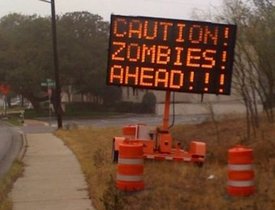Posted: October 3rd, 2010 | Author: Ryan | Filed under: Uncategorized | Tags: GOOD.is, idea, taxes | 1 Comment »

While starved for inspiration and simultaneously bored out of my mind on Saturday afternoon, I came across this fantastic idea on GOOD.is: Taxpayer Receipts.
Think about it, when you buy a burger, or a pair of shoes, or a plane ticket, you get a bill of sale, itemized documentation of what you paid for.
However, what’s our single largest expense annually? Tax
Do we get any sort of itemized statement telling us what we paid for? Nope
Curious, right?
Yes, yes, a thousand times yes. Third Way, a self-described “leading moderate think tank of the progressive movement,” recently put out a plan for reducing the deficit, which included this embarrassingly obvious idea. Maybe taxpayers should get a breakdown, receipt-style, that explains where their money went each year.
Here’s what one might look like:

This single, embarrassingly simple item could clear up loads of voter/public misconceptions and radically increase the average American’s understanding (and hopefully appreciation) of the things we pay taxes to fund. Questions like:
“Did we really just pass Health Care Reform in a country who’s elected officials placed highway maintenance above health research?”
“NASA gets that much more than the EPA? I like space exploration but maybe we should maintain the planet we have since we can’t seem to find a new one to move to anytime soon.”
“Why does so much of my money go to Social Security if I keep being told the system will be broke in a few years? What’s the plan then, and will I get to keep that money? Why the hell didn’t Senior Citizens save when they were my age?”
Of course, this may be precisely why we don’t get information. Imagine if politicians had to run on truth and math that made sense, not repeatable scare-tactics and talking points? Makes you shudder, right?
Posted: April 23rd, 2010 | Author: Ryan | Filed under: Uncategorized | Tags: blog challenge, GOOD.is, local, neighborhood, urbanism | Comments Off on GOOD’s “Neighborhood Manifestoâ€

City slickers love telling everyone what neighborhoods they live in. It’s become a kind of shorthand for what sort of person they are, what they value, where they like to hang out. It makes sense: As small as the world has gotten, it’s still really big, and carving out a little piece of it that feels familiar and pride-worthy is a basic human urge.
But forget for a second where your apartment is, and think about the blocks that surround it, the guy one door down you’ve never spoken to, the people you mill around at the flea market or pass in the bike lane on your way to the grocery store. You probably have as much in common with them as you do with your friends, but you’ve never even met.
Now, if you’ve read my blog (TB3N) for any time now, you’ve seen me advocate for more lively neighborhoods more than once. At it’s base, what they said above is 100% true. We do tend of generalize people, even within our own community, based upon where they live.
Does your block have something to say about you?
Or do you have something to say about what your block really is?
The first step is getting out there and finding out the truth and seeing what you can do to be more involved.
The first step to building a better neighborhood is the step out your front door.
To read more from GOOD.is Guide, click here.
(This is Day 30 of the 30 Day Blog Challenge, be sure to check out the other participants at #30DayBC)
Posted: April 2nd, 2010 | Author: Ryan | Filed under: Uncategorized | Tags: freeway, GOOD.is, green | 1 Comment »
Here’s a fun side-note follow-up to last week’s freeway discussion. From GOOD.is:
Why Are We Paying States to Build Highways Expensively and Indefinitely?


In the 1960s, a system was authorized by LBJ that put lots of money in Appalachian state coffers. Aiming to reduce the isolation and inconvenience of some of America’s poorest areas, the
Appalachian Development Highway System was going to accomplish this by building
thousands of miles of blacktop, largely at the federal government’s expense. On approved projects, the feds fork over four dollars for each one spent by the state. Four and a half decades have passed and, guess what? The system still exists. It’s the subject of
a new piece by our friends at WNET called Zombie Highways.
The program has been informally dubbed “cost-to-complete,” which tells you a little something about how it works. “States have an incentive to add more and more highways to the program, build them as expensively as possible – and never finish them, because doing so would ‘turn off that federal spigot of money,'” writes WNET’s Rick Karr.
This episode, which you can watch here, looks at a proposed 52-mile Alabama stretch of road that would cost taxpayers over $3 billion. Talk about a questionable allocation of resources.
Sort of explains why they’re “always building something”. Additional lanes that don’t reduce traffic at all, just so that the state can keep getting funding. How about a law that gives dollars for NOT building wasteful projects?
Posted: March 19th, 2010 | Author: Ryan | Filed under: Uncategorized | Tags: GOOD.is, green, idea, marketing | 1 Comment »
From TreeHugger.com:

Fading Barcode
A group of designers have decided that there’s got to be a better way to find the freshest produce in a supermarket. Rather than trust your own senses, they think a fading barcode is the right solution. They’ve come up with a barcode that starts off as a usual barcode, then slowly fades along with the product’s freshness. Not only would you be able to see which fruits and veggies have just been delivered, but when the barcode is nonexistant, that indicates to the store that it’s time to toss the product rather than sell it.





